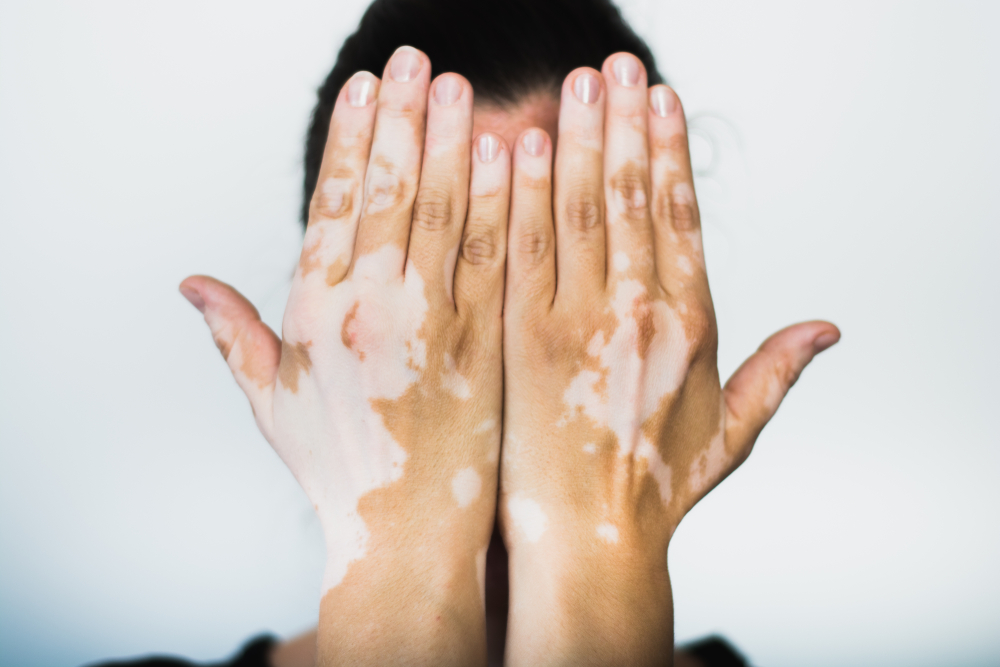What is Leukoderma? Know More About Its Causes, Symptoms, And Treatment

Introduction to leukoderma (vitiligo):
Leukoderma or leucoderma may begin as small patches in the skin. With time, these enlarge and merge with other patches over several months. Although they can crop up in any part of the body, the initial patches are usually on the hands, forearms, feet, and face. The larger patches generally stay in place, while the smaller patches shift and change with time. The area affected by the condition varies from person to person.
The condition is most noticeable in people with darker skin and usually presents between the ages of 10 and 30 years.
What causes vitiligo?
It is hard to determine the exact cause of every occurrence of vitiligo. However, some of the identified causes include:
- Autoimmune disorders
- Genetic or inherited factors
- Caused by malfunctioning of nerve endings (neurogenic)
- Disorders with cell death machinery lead to the self-destruction of melanocytes
- Traumatic incidents including cuts and burns
Physical or emotional stress is sometimes known to exacerbate vitiligo.
What are the types of vitiligo?
- Non-segmental vitiligo - This is the most common type affecting almost 90% of the cases. The condition usually presents as patches appearing on both sides of the body symmetrically. This kind of vitiligo is further divided into:
- Generalized or universal leukoderma - White patches occur anywhere in the body
- Focal vitiligo - is usually found in children and restricted to one area
- Acrofacial vitiligo - causes loss of pigment around fingers, lips, and near the orifices like mouth, nostrils, and upper lids.
- Mucosal leukoderma - occurs only on mucous membranes
- Segmental Vitiligo - This kind of vitiligo is restricted to one side of the body. This is the type of vitiligo seen in about 10% of cases whereas 90% is non-segmental. The appearance is different from the non-segmental variant and the treatment is also different.
What are the symptoms of leukoderma?
- Loss of pigment, especially in areas exposed to the sun
- Spreading of white patches after injury
- Itchy feeling over white patches on exposure to sun or sweat
- Spreading prominent patches
- Grey hair
- Change in color of eye
How is leukoderma diagnosed?
Your doctor will be able to observe the changes in your skin by observing. They may also observe your skin under a UV lamp called Wood’s lamp that helps the doctor distinguish vitiligo from other conditions. Other conditions like Chemical leukoderma, albinism, pityriasis alba or a yeast infection called tinea versicolor also resemble the symptoms of vitiligo.
What treatments are available for vitiligo?
Although there is no permanent cure for vitiligo, the goal of treatment is to achieve cosmetic continuity of the skin color. Different methods may be used to achieve this result, such as:
- Camouflage:
- Using sunscreens with SPF >30. This minimizes tanning in nearby skin reducing the contrast with the affected area
- Makeup
- Hair dyes
- Depigmentation if the affected area is the majority of the skin. This is done by turning the normal skin also white.
- Light therapy:
- Narrow-band UV-B requires 2-3 sessions/week
- Excimer laser - to deliver treatment to small targeted tissues
- Combining oral medication and UVA radiation
- Repigmentation:
- Using corticosteroids
- Topical Vitamin D analogs
- Topical immunomodulators
- Surgery:
- Skin grafts from another unaffected part of the body
- Micropigmentation using medical tattooing usually applied to lips
Your doctor may also recommend counseling to ensure that you are not in distress because of the condition. Always remember that you should never try to reduce your activities, ambitions, or social interactions because of vitiligo. Your counselor will guide you to be mentally strong while dealing with questions in your mind.
Some of the commonly advised home remedies (although not conclusively proven) include:
- Keep yourself hydrated
- Consume food rich in Vitamin C, Zinc, and Copper
- Apply a mixture of basil leaves and lime juice or a mixture of turmeric and mustard oil to help stimulate melanin production.






